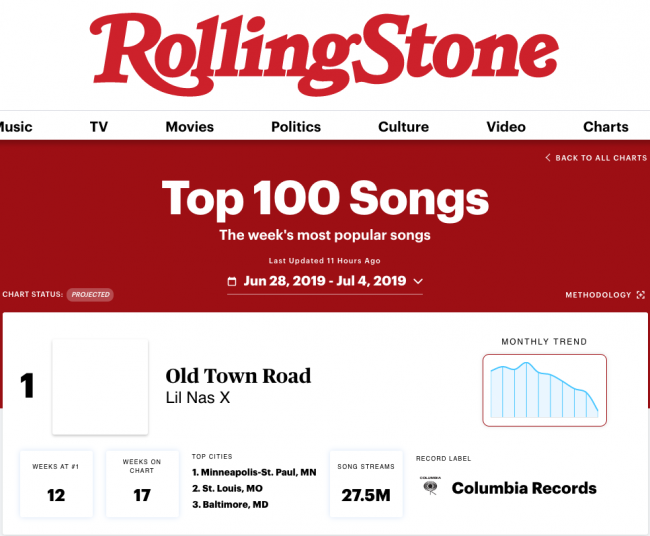
Music is being consumed like never before. As new streaming outlets for music enjoyment have developed, consumer habits have outpaced conventional music charting. Enter Rolling Stone Charts, June 28th Alpha Data began compiling information for the maiden voyage of the brand new charting system. Alpha Data provides granular sales tracking as a separate entity from Rolling Stone Charts. Based on consumption rather than sales, the charts update daily to reflect the quickly changing digitized music landscape.

Metrics used to compile the charts include music streaming, digital downloads, and physical music sales. Being that streaming and sales are very different animals, the 1:1 ratio won’t work. In this case, Rolling Stone Charts track various methods of music, consumption together as “song units” and “album units” with specific weights assigned to streams, downloads, and sales. According to their website “The charts track audio streaming, whether paid or unpaid, from on-demand music-streaming services, which are the dominant way fans listen to music.” The concept feels revolutionary after years of traditional charts only reflecting sales and terrestrial radio.

Some aspects including user-generated content, such as unofficial videos featuring songs, are still debated across the industry but Rolling Stone Charts pledges to evolve as specifics on these issues are clarified. For genres that are not widely streamed like reggae and gospel, the conventional weekly paced charts will remain the standard for now. In its beta version, Rolling Stone offers five charts based on popular consumption: Top 100 Songs, Top 200 Albums, Artist 500, Trending 25, and Breakthrough 25. With further domestic charts in the works along with international charts, the expansion beyond the breakthrough system is highly anticipated. This can only be seen as a step in the right direction toward understanding and quantifying an ever-widening stream of varying methods of music consumption.

